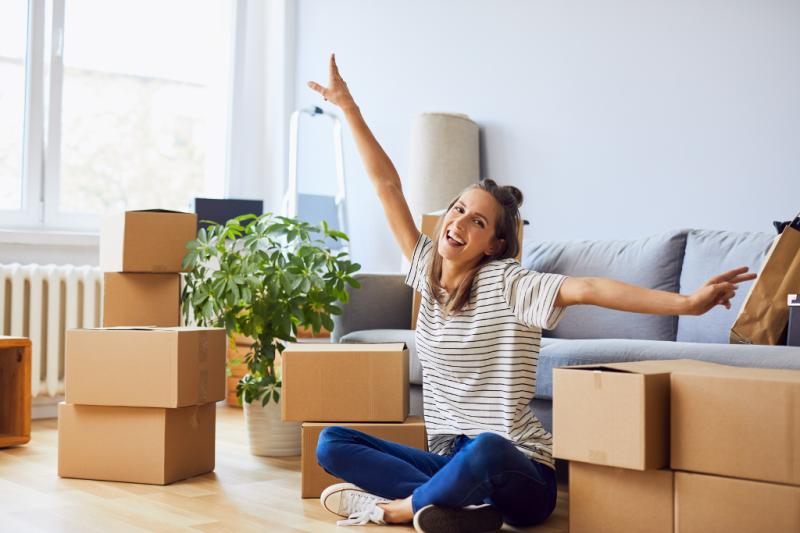Overcoming Obstacles In Downsizing To A Smaller Apartment

Downsizing to a small home has become very popular lately. Many people like the idea of saving money, having less stuff, and living a simpler life. But it can be hard to get rid of several belongings and move.
You might feel stressed about having less space or sad about leaving memories behind. If you make a plan and take it slow, downsizing can feel exciting instead of scary. This article will guide you in overcoming the usual obstacles one may face during a move.
Facing The Emotional Hurdles
Letting Go of Memories
People often treasure their belongings for their connections to memories. Take time to honor these bonds before deciding what stays. For more meaningful items, save just a piece or digitally archive through photos. Reputable solutions like Grande Tyler storage also keep heirlooms safe while you adjust to less space.
The stories of those who've downsized advise focusing on future memories to make, not clinging to possessions because of obligation. Embracing minimalism is more about gaining daily joy rather than losing things that represent past happiness. View it as an exciting, liberating lifestyle shift.
Fear of Claustrophobia and Loss of Freedom
Moving from spacious homes to compact ones can spur anxiety about feeling cramped and boxed in by limited areas. However, clever design and furnishings that serve dual purposes or conserve space help maximize square footage.
Many apartments offer amenities like parks, gyms, pools, and walkable conveniences that can help alleviate isolation and expand accessible space. Maintaining clutter-free zones makes rooms feel brighter and more breathable as well. Appreciating freedom from excess helps overcome the fear of too little.
Conquering The Practical Challenges
Decluttering and Prioritizing Possessions
Frameworks like the KonMari method offer guidelines for sorting through possessions, helping you to decide what to keep. Ask yourself critical questions like "What value does this item add to my life?" and "When did I last use or even see this?" to help assess actual utility and function.
You can carefully preserve irreplaceable memorabilia through professional storage units or family safekeeping for those not ready to part with items. This frees up living space. Daily-use pieces fill daily living areas, while infrequent-use items can be removed.
Categorize your belongings by room or type. Set manageable goals for how much to sort through day by day instead of becoming overwhelmed. For example, commit to filling one donation box per evening. Consider snapping photos of the items you're letting go of to have digital copies. Recycle where possible, then evaluate consignment sale versus donation based on marketability.

Furniture and Space Optimization
Evaluate your furniture against the constraints of a smaller apartment. Remember to measure doorways and layouts to ensure pieces fit in your apartment while also serving their maximum purpose.
Furniture like Murphy bed desks, sleeper sofas, and other convertible pieces can give rooms flexible functions. Loft beds create usable areas underneath. Couches with hidden compartments or that fold out to beds optimize rooms lacking dedicated bedroom areas. Meanwhile, mounted or folding desks free up valuable space when not in use.
When selecting updated furnishings, pick features that brighten and expand areas. Washable slipcovers, glass or metal materials, and neutral tones help keep cozy quarters clean and airy feeling. Incorporate vertical storage through creative shelving, mounted bathroom organizers, or wall hooks to leverage dead spaces. Bin and basket organizers keep your essentials accessible.
Tackling The Logistical Hurdles
Moving and Downsizing Logistics
Moving itself is already labeled one of life's most stressful events—add simultaneous household purging, and the concept becomes more unnerving. It's essential to calculate estimated costs for professional packers and movers, truck rentals, storage lockers, utility transfer fees, and cleaning services to ensure budgeting accuracy.
Create room-by-room packing checklists, assigning tasks over the weeks prior to moving day from highest to lowest priority items. Pack up each area methodically, directly filling boxes and labeling by intended room in the new home. This leaves you ready to unload into your new yet smaller apartment space. During this time, suspend services at your old residence while activating utilities at the new address in advance.
Adapting to a New Environment
The community orientation of apartments or clustered housing often offers more opportunities for socialization than isolated houses. Seek out neighborly interactions like borrowing a needed ingredient or getting advice about nearby services from long-time residents. Explore nearby public parks, walking and biking trails, community gardens, and other local conveniences that become shared backyards.
Consider joining relevant resident associations to make acquaintances interested in planning local activities and to raise concerns about neighborhood improvements. Taking part in meetings also shows your neighbors how much you care about keeping your shared space safe and enjoyable to live in.
Initially, it helps to designate sections of private quarters to feel homey right away, like setting up the bedroom or kitchen first. This establishes a sense of control and normalcy. To ease inevitable feelings of isolation, schedule video calls or visits with distant friends and family members. Over time, adapting gets easier until the new community feels like it just fits.
Embracing Your New Space
Many smaller apartments can increase efficiency and eco-friendliness through shared walls and transportation. Lower heating costs and limited private outdoor areas reduce environmental impact. Cleaning your home also becomes easier with fewer possessions. With life's noise pared down to priorities, your purpose and relationships regain attention over materialism.
Get creative when tackling constraints. Repurposed everyday items can become eclectic wall decor or storage solutions. Swaths of vibrant fabric drape as makeshift headboards. Incorporate personal touches like travel souvenirs, artworks, or textiles to bring warmth and familiarity.
Window light eliminates dark, depressing corners. Leverage vertical elements to draw the eye up, elongating cramped spaces. Even though the space gets smaller, you can make it feel like home by decorating it with special items that show your personal style.
Conclusion
Careful preparation, courage in reducing clutter, and focus on functionality make downsizing to a smaller apartment achievable. Consider viewing it as an opportunity to align your living space with your values. With less spent on unnecessary items, more resources go toward meaningful pursuits. In that sense, living with less enables living more fully.
More to Read:
Previous Posts:










